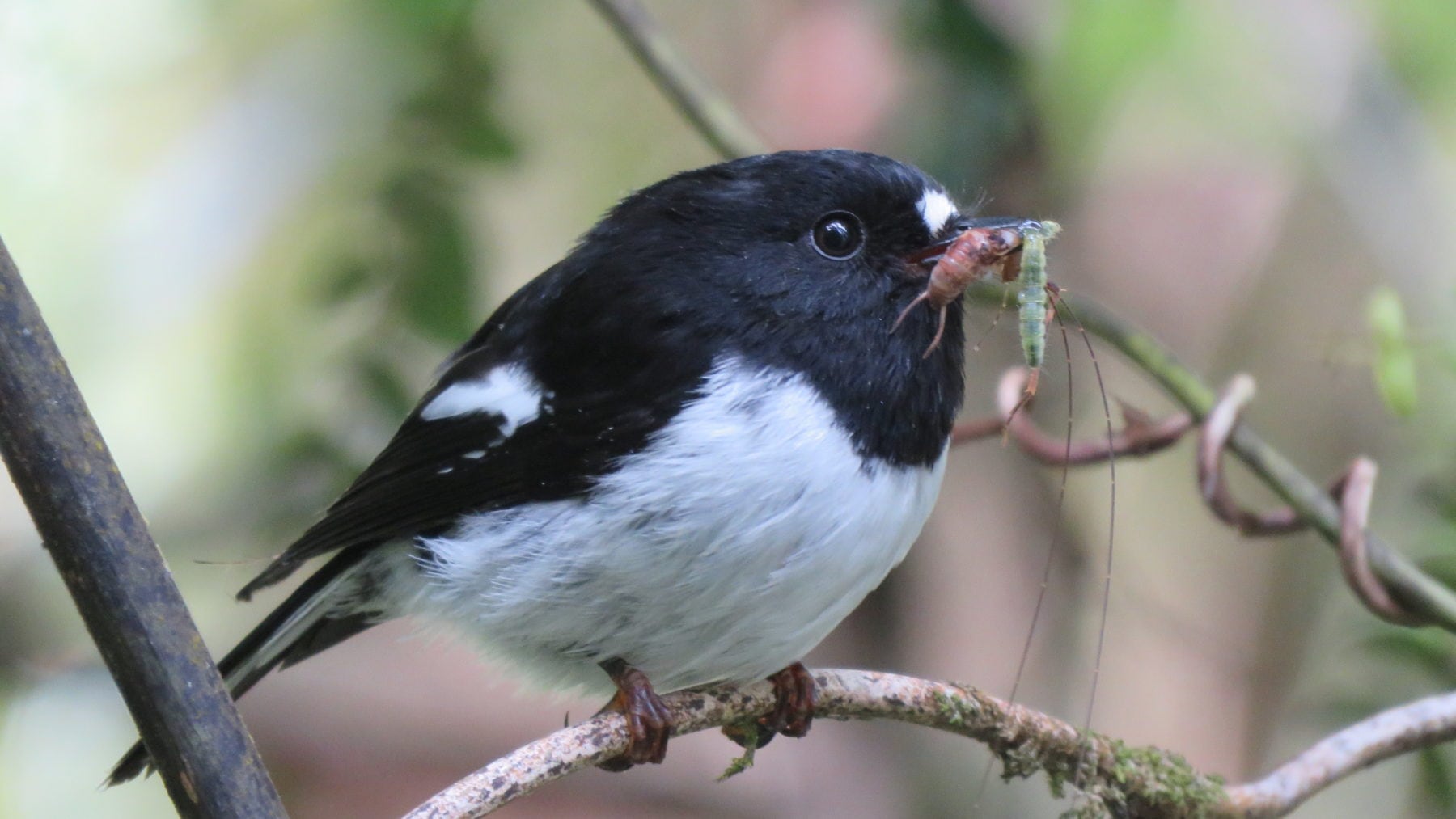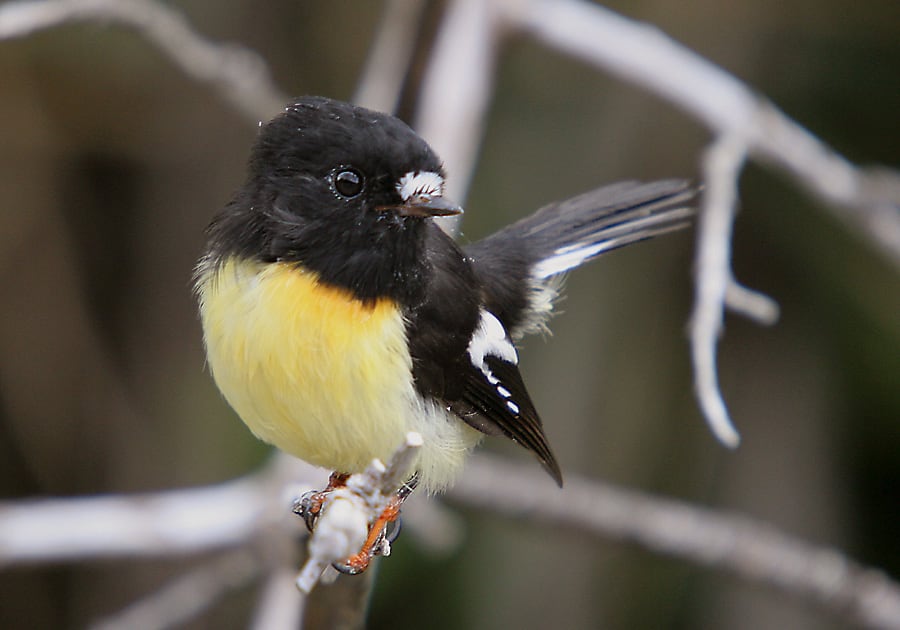The New Zealand tomtit is a sweet little nugget

Bec Crew
Bec Crew

FOUND ONLY ON the islands of New Zealand, these delightful birds take after their name: “tomtit”, short for “tom titmouse”, dates back to the 16th century as a word used to describe a small animal or object.
Tomtits (Petroica macrocephala) live off a variety of invertebrates, such as caterpillars, spiders, moths, and giant, rodent-sized insects called weta. They’re closely related to New Zealand’s Chatham Island black robin (P. traversi), and the two are thought to have evolved from an ancestor that flew over from Australia.
While the tomtit has managed to adapt quickly to the changing environment of New Zealand, the black robin is sadly endangered, and was only recently pulled back from the brink of extinction.
It’s thanks to the tomtits that the black robins have made a comeback – tomtits acted as unwitting foster parents for the eggs of a very special black robin, Old Blue, who you can read about here.
There are five known subspecies of tomtit, and they’re quite striking when you compare them.
There’s the North Island tomtit (P. m. toitoi), with a lovely white chest, which can be found on the North Island of New Zealand and the tiny adjacent islands, Hen and Chickens, Little Barrier, Great Barrier, and Kapiti:

The South Island tomtit (P. m. macrocephala) looks entirely different, with a daffodil yellow chest:

The Māori name of the North Island tomtit is miromiro and the South Island tomtit is known as ngirungiru.
The Chatham tomtit (P. m. chathamensis) and the Auckland tomtit (P. m. marrineri)
look very similar to the South Island tomtit, but the Snares Island tomtit (P. m. dannefaerdi) is pitch black.
Here’s a North Island tomtit looking absolutely adorable in the Taranaki National Park on the west coast of the North Island:




